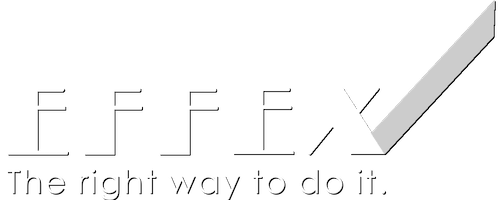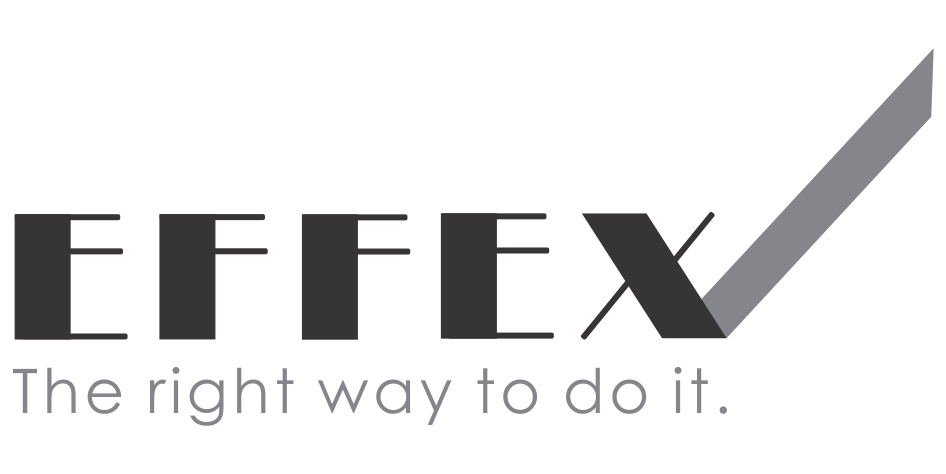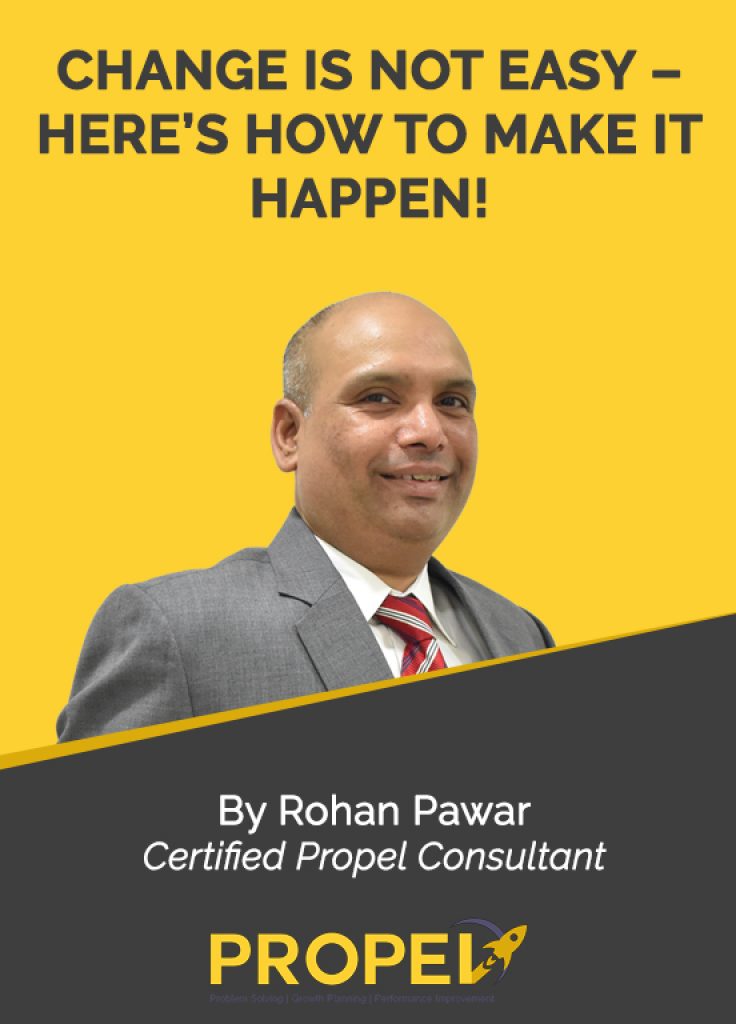Nature, by design of the Almighty, loves equilibrium. That sublime state of existence where all things – animate and inanimate – have a harmonious relationship with each other. Nature always strives to achieve that harmony & we as humans are no different.
For centuries, we Humans have learnt to have such a relationship with everything around us and we have attained this by creating rules, rituals & habits which have become a way of life over the years.
So what happens when this ‘set’ way of living is disrupted or has to be changed? You thought right, it causes inconvenience, uncertainty and stress. The human brain is hard-wired to ‘protect’ us against such stressful events and hence we are naturally inclined to resist change.
A business owner’s way of working is a factor of his thoughts, habits & experiences. The business owner seldom steps outside of boundaries of his thoughts, habits & experiences. It is human nature to continue doing the same things in the same manner as it gives the feeling of being protected. These are the driving forces behind the engine of success or failure for the business. Often it has been observed that huge successes have been achieved on account of them & there are also many instances where the businesses have been doomed for the same reasons.
To bring this into perspective, allow me to share a few examples.
- The Eastman Kodak Company started in 1888. This company worked on the strategy of selling inexpensive cameras and making their margins from film, chemicals and paper. For almost 90 years Kodak commanded 90% of the market share. They were the undisputed champions of their industry loved by the consumers and dreaded by the competition. The engineers at the company created the world’s first digital camera in 1975 – almost 25 years before the product became mainstream. This product, however, was dropped because it threatened their traditional photographic film business. In the 1990s too, a decade long journey to move into digital technology was formulated, unfortunately, this too wasn’t implemented.
The result was that Kodak had to play catchup with competitors who arrived with far more advanced products that met the market requirements. They saw a huge erosion of their market share and profits. The root cause of this was their resistance to change.
- Nokia were the uncrowned kings of the mobile phone industry commanding 35% of the global handset market while reporting a turnover of €31 billion in 2001. Some of the products they introduced where ground-breaking – like the world’s first gaming phone (Nokia N-Gage), the world’s first 41-megapixel sensor in the Nokia 808 PureView phone. They were huge supporters & partners in the Symbian operating system that ruled all mobile phones worldwide.
Nokia’s erstwhile Vice President and Chief Designer has gone on record to mention that they had developed a tablet in in the late 1990s and a touchscreen phone in 2002. Both products had touchscreens and allowed the user to browse the internet, find restaurants and play games.
Both products were ready to be mass produced many years before the iPhone was created.
Sadly, both products, were rejected by the management teams. They did not recognise the importance and ease of use of the “Touch screen” technology and continued to rely on the Symbian system for all their devices.
The end result has been that Nokia had to sell off their mobile phones business to Microsoft and completely exit the mobile handset industry
Both examples shared above highlight the fate of organizations that fail to understand and recognise the changing needs to the market. They tell us a tale of what happens when companies operate from a pedestal of invincibility and take the market for granted.
A typical business is much like a chessboard with the business owner having to constantly look at what turn the market takes and then make a move
On quite a few occasions, business owners have been slow to react or completely miss out on identifying signs. Even if they do see the signs, they aren’t able to summon the will to take action.
What could the possible reasons be:
- Business owner is so engrossed in day-to-day working of the business that he completely misses out on the big picture
- Business owner feels he is simply too secure to be affected by the turn of events
- Business owner feels he will not be the only one to get affected. His peer group / industry will also be affected
- There is huge effort needed to change the current style of working
- Someone else will have to be trained to take over some of the tasks that the Business Owner himself does. There is reluctance to give away control over such tasks / things.
There is also a fear of information leakage / confidentiality breach
- Since the Business owner may not have any knowledge or experience in that area, there is the fear of the unknown
- The business owner may have attempted to do something similar earlier but may not have succeeded.
How does one embrace change & take steps for the betterment of the business?
- The business owner is obligated to the nation, society and the employees to create a thriving business. The future and well-being of all staff members are wholly dependent on him and his decisions. The sooner the business owner comes to terms with this responsibility the better it is.
- Understand the change
As Albert Einstein has famously quoted “If I had one hour to solve a problem, I would spend 55 minutes defining the problem & the last 5 minutes in solving it.”
The business owner should take a stock of the business – where it currently is and where he wants it to be
- Understand how big the gap is between the current situation & expected situation
- Understand what the influencing factors are.
- Influencing factors are those factors that will have an impact on the outcome
- Understand how much time is available.
- Understand what resources will be required to transform the current situation to the new & desired state
- Understand who the key staff members, business partners, associates, etc. are that will play a crucial role.
- Understand if any investments may be needed.
- Pilot Process
Once the problem / situation has been understood, it is important to test the strategy / solution before implementation.
This testing is of utmost importance as it will allow for corrective actions to be taken
Identify that area of the business where the new strategy / solution will be implemented.
- Review
It is recommended that any change be allowed 3 months (90 days) to settle in.
During this period, careful observations are to be undertaken to understand the benefits & pitfalls
Regular review of these changes needs to be done & observations should be noted.
- Corrective action
Take remedial action where needed and again observe the impact
- Seek assistance from experts
One cannot stress on the importance of seeking assistance from experts when needed.
Sure, the business owner is knowledgeable. On many occasions, the business owners have themselves created the business & taken it to the position where it is at.
But as the saying goes, “No problem can be solved from the same level of consciousness that created it” – it is prudent to take expert advice where required.
Gone are the days when the Ambassador car was considered the pride & joy of politicians and industrialists alike. Now they prefer a Mercedes or BMW or a Jaguar.
The business owner needs to be nimble and forward-thinking to jump over obstacles that might threaten the very existence of their company. We no longer live in a world where ‘slow & steady win the race’.
A successful entrepreneur is the one who changes with changing times. One who adapts to an ever-evolving world by changing their thoughts & habits. One who believes that ‘Only Change is Constant’ or to again quote Dr. Albert Einstein, “Life is like riding a bicycle. To keep your balance, you must keep moving”.
Keep Propelling!








